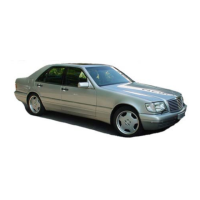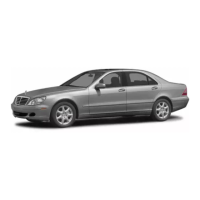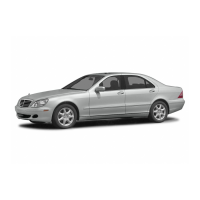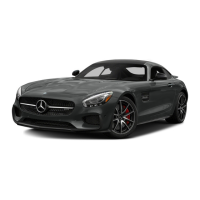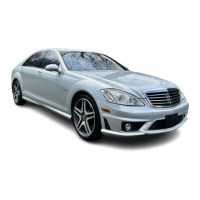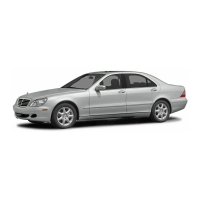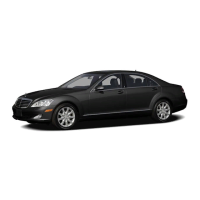303
Controls
Driving systems
Your vehicle’s driving systems are de-
scribed on the following pages:
앫 Cruise control, Distronic*, Distronic
Plus* and Speedtronic, with which you
can control your vehicle’s speed
앫 HOLD, which makes stopping and pull-
ing away easier, particularly on steep
uphill gradients
앫 Airmatic and ABC*, which can be used
to control your vehicle’s suspension
앫 Parktronic*, which assists you with
parking and manoeuvring
앫 Park Assist*, which assists you with
parking and manoeuvring
앫 Reversing camera*
앫 Nightview system*
The ABS, BAS, BAS Plus, ESP
®
and ADAP-
TIVE BRAKE driving safety systems are de-
scribed in the “Safety” (
컄 page 53)
section.
Cruise control controls your vehicle’s
speed for you.
Use cruise control if road and traffic condi-
tions make it appropriate to maintain a
steady speed for a prolonged period. You
can store any road speed above 30 km/h.
Driving systems Cruise control
G Risk of accident
Cruise control cannot take account of road
and traffic conditions. Always pay attention
to traffic conditions even when cruise con-
trol is activated. Cruise control is only an aid
designed to assist driving. You are responsi-
ble for the vehicle’s speed and for braking in
good time.
G Risk of accident
Do not use cruise control:
앫 in road and traffic conditions which do
not allow you to maintain a constant
speed (e.g. heavy traffic or winding
roads). You could otherwise cause an
accident
앫 on slippery roads. The drive wheels
could lose traction when braking or ma-
noeuvring and the vehicle could skid
앫 when there is poor visibility, e.g. due to
fog, heavy rain or snow
G Risk of accident
The brake pedal is depressed when cruise
control brakes. The movement of the pedals
must not be impaired in any way.
앫 Do not place any objects in the footwell.
앫 Make sure that floormats and carpet are
firmly secured.
앫 Do not place your foot underneath the
brake pedal, otherwise it could become
trapped.
You could otherwise cause an accident and
injure yourself and others.
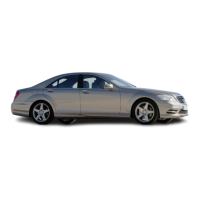
